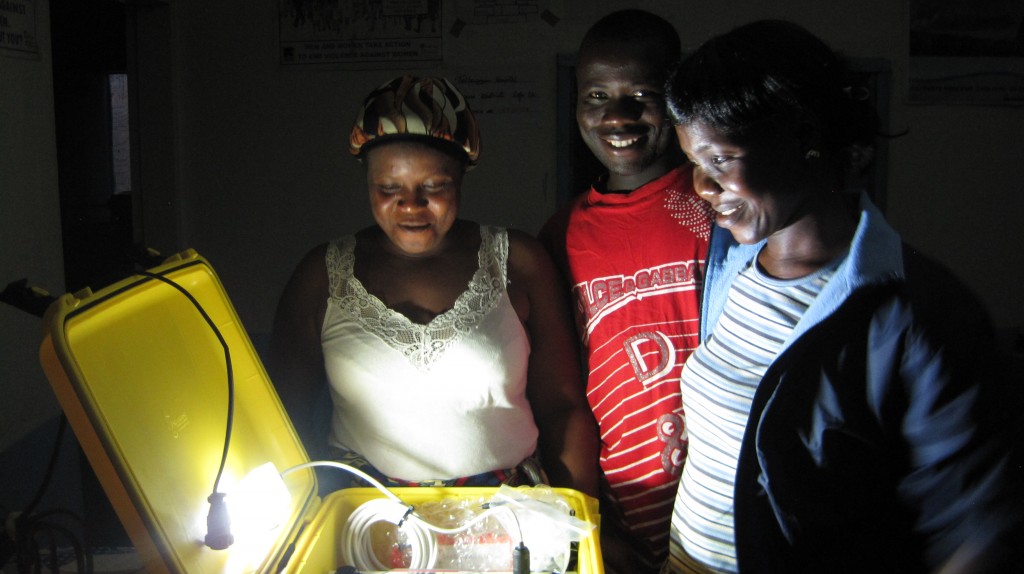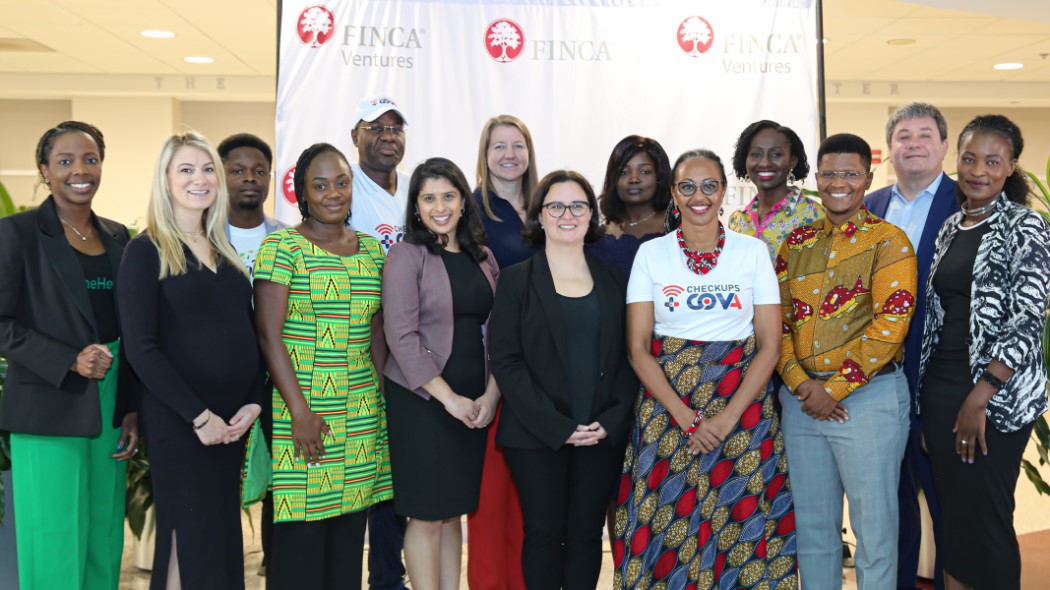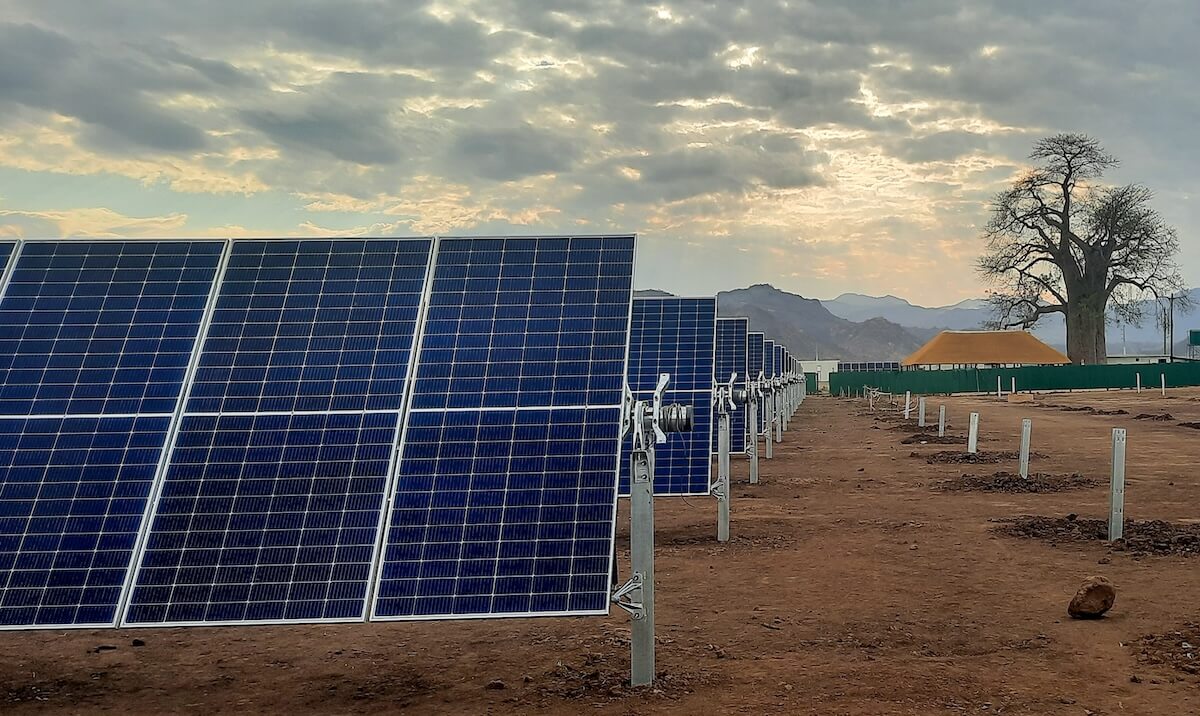Lower-than-expected risk. Higher-than-expected impact.
Access to electricity is emerging as an impact investing success story across the developing world. About 100 million people a year are gaining such access each year, pushing the number of people worldwide without electricity below one billion sometime in the coming year.
“It’s hard to think of a greater impact than bringing power to communities that don’t have it and how transformational that is in terms of lives, economies and businesses,” Imogen Rose-Smith said in the latest Returns on Investment podcast from ImpactAlpha. “It’s a very robust, scalable market with a risk-return profile that makes sense to asset owners across the spectrum.”
A fellow in the University of California’s investment office, Rose-Smith is ROI’s resident curmudgeon. But even she was keen on business models such as 10Power, which finances commercial-scale solar and storage projects in Haiti. Investing in such frontier markets is generally considered highly risky, she says. But low default rates and transformational impact means, “There’s a certain amount of risk, but nowhere near what you’d think.”
Vehement agreement
Podcast regulars fell over themselves to make the case for off-grid energy access, which is critical to meeting Sustainable Development Goal No. 7: “Ensure access to affordable, reliable, sustainable and modern energy.” Host Brian Walsh said the episode’s biggest problem is the “violent agreement” among the usually combative roundtable.
Walsh is himself an investor in the off-grid solar sector as head of the Liquidnet for Good Fund, a nonprofit impact fund backed by the fintech company Liquidnet. Ignite Solar, in Rwanda, finances buyers of home solar systems on a pay-as-you-go basis.
“It’s not just providing energy access, but developing customers and relationships with people who traditionally were thought of as very poor people who should be recipients of foreign aid and charitable support,” Walsh said. “We now have data on their ability to pay each month and can provide them with other products down the road.” That’s attractive to mainstream investors, he says, “because now they have a line of sight into how this is a viable long-term play.”
The impact opportunity in the mispriced risk of lending to the underserved
Anecdotal evidence suggests that impact investing in energy access is ramping up. The Shine Campaign, which seeks to mobilize both philanthropic and private capital for energy access, surveyed fund managers who had invested a total of $300 million in energy access ventures. The 10 managers collectively expect to deploy $1.3 billion in such ventures over the next two years, with half of the capital already raised. “It’s a hockey stick,” said Shine’s Mark Correnti.
(The 10 funders are: Acumen Fund, Bamboo Capital Partners, DWS/Deutsche Bank, FMO/Shell Foundation, Microgrid Investment Accelerator, Oikocredit, responsAbility, SIMA, SunFunder and Triodos Investment Management.)
Capital gaps
I shared my experience as a board member of We Care Solar, a nonprofit that builds and distributes “Solar Suitcases” to developing world health clinics, primarily for healthy childbirth. Many midwives and doctors still rely on kerosene lanterns, candles or even cell phone flashlights as women give birth, hampering their ability to deal with even routine complications.
Resource-starved public health clinics are a tough case. “It’s the most obvious public health intervention to bring light into these clinics,” I said. “But the systems are not well-oiled to finance these kind of capital improvements.”
One disagreement that did emerge was over the nature of the critical capital gaps that remains. Imogen argued that it’s a shortage of early-stage equity financing, “the venture funding, startup dollars to get to the point where they’re able to take on the lines of credit and build out the client base to get them to critical mass.”
I suggested the current challenge is to establish such asset-backed lending to the poor as a viable banking business, and particularly for local banks lending against accounts-receivable for working capital. The big breakthrough, I said, will come with “good old-fashioned commercial bank loans to finance expansion of off-grid solutions.” (ROI listeners can tweet their support for #TeamImogen or #TeamDavid.)
Mini-grid developers get ready for debt capital to scale up access to clean energy
We all agreed that scale economics have kicked in, driving down the cost of capital and accelerating adoption.
“There’s some kind of consolidation that’s inevitable as companies that get big enough to cut these commercial financing deals enjoy lower costs of capital and have a competitive advantage,” I said. “Small is beautiful, but it may be that there are two to three big providers in each country, just like there are two to three big telecom providers in each country.”
Listen to the lively roundtable discussion, and catch up on all of ImpactAlpha’s Returns on Investment podcasts.











